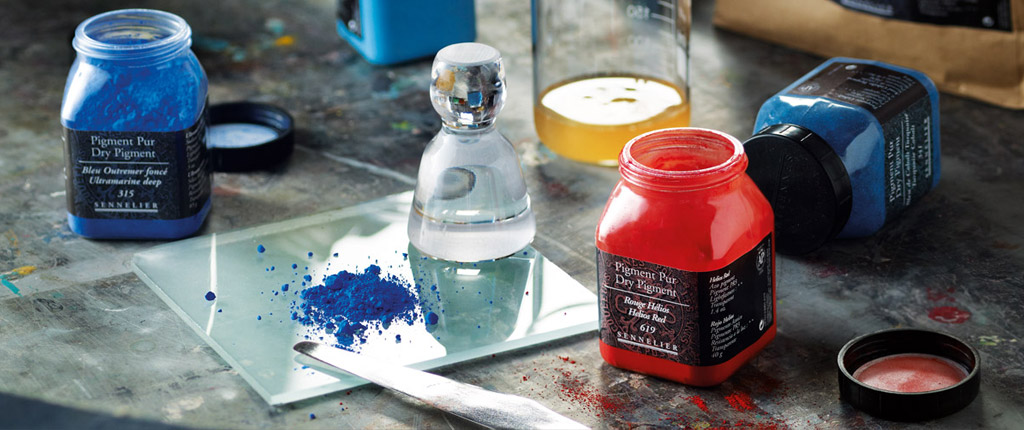
Rich in its history, Sennelier belongs to the Max Sauer Group, an industrial group dedicated for more than 200 years in the fine arts sector. Sennelier has become the “reference” brand that it is today for artists because it has always been able to combine the traditions of the Old Masters with the innovations provided by modern chemistry.
History
In 1887, Gustave Sennelier, a devoted chemist, established himself as a purveyor of fine-artists’ paints. Having thoroughly researched the history and usage of pigments, he developed a distinctive process for manufacturing oil colours, formulating precise methods for mixing tones and for controlling their opacity and transparency. He understood that high quality paints needed to be produced using the very best quality pigments, which had to come from carefully checked sources and have very specific chemical properties. Adhering to these standards ensured in the end that the original hues were preserved and that the artists’ works would stand the test of time. His work was so meticulous and his eye for colour so accurate that artists soon began to regard the Sennelier palette as the ultimate standard of quality. Since them, Sennelier artists’ quality oil paints have hung the world’s greatest museums, and the Sennelier name has become a legend. Not only is it renowned for sustaining the traditions of the Old Masters, but it is admired worldwide for combining those traditions with the innovations of modern chemistry.
It took over three years, at the turn of the 20th Century, to formulate the Sennelier range of Extra Soft Pastels “à l’écu” and thus to create one of the largest chromatic range of pastels. The exceptional brightness is the result of the pigment and of the natural mineral fines discovered by Sennelier in 1905 and that have been used ever since.
In 1949, Parisian painter Henri Goetz approached Henri Sennelier, the famous artist materials manufacturer, about creating a wax colour stick for his friend Pablo Picasso. Picasso, a long-time Sennelier customer and a frequent visitor to their store across the street from the Louvre museum, was looking for a medium that could be used freely on a variety of surfaces without fading or cracking. Their collaboration produced the incomparable Sennelier oil pastels.
